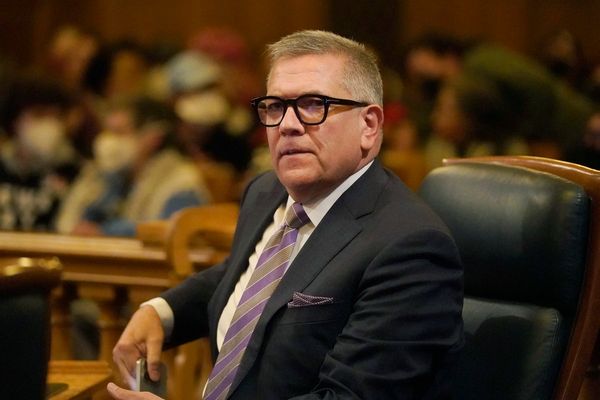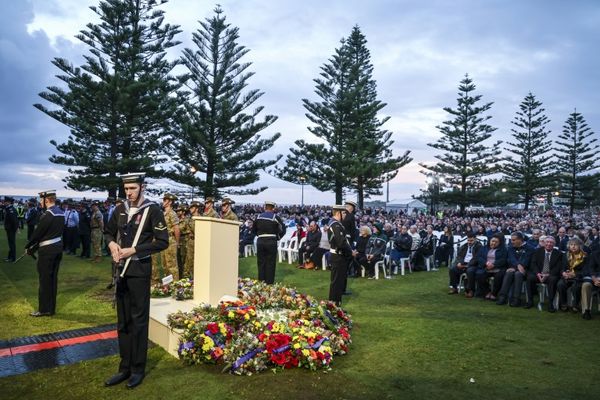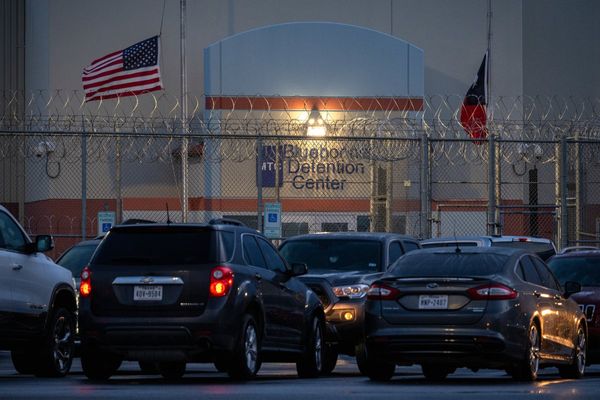Last night's federal budget revealed $6 billion will be spent on flood relief for communities in south-east Queensland and northern New South Wales, but those affected say it does not come close to addressing immediate housing needs.
The budget stated an estimated $2 billion would be spent on support measures for flood-affected primary producers, small businesses, not-for-profit organisations, and temporary accommodation measures on a 50:50 shared basis with both New South Wales and Queensland governments.
Contingency plans for $3 billion have also been made to accommodate any future spending and additional payments that need to be made.
An estimated $1.75 billion in assistance is also expected to be made through the Commonwealth's Disaster Recovery Allowance and the Australian Government Disaster Recover Payment.
Ipswich resident John Hill and his family were displaced when their home was inundated during the recent flood disaster.
He, his wife and two children are currently staying in a motel, but it is only a short-term solution.
Mr Hill said he had hoped the budget would include housing help to be made instantly available for flood-affected people.
"We are in a motel with a lot of other flood-affected people and there's people here that literally don't have enough money to go out and buy their kids shoes to go to school with.
"That money that they're saying is there, it doesn't need to be a future payment, it needs to be payments to the flood-affected now, so that we can get back on our feet."
Mr Hill said that, as of next week, his family doesn't know where they will be living and affected residents were being made to jump through "unnecessary hoops" to apply for emergency funding.
"They know which houses have been flooded, and those payments should be instant," he said.
'We are living in this mess now'
Single mum Tahlia Harris is still living in her house in Loganlea, despite the entire first floor having been flooded.
She has been applying for other rentals and, out of desperation, called homeless and housing crisis centres to try to get help to find a new place to live.
"We've got mould growing everywhere," she said.
"I've been on the phone to homeless hotlines, and they have told me straight up, 'We don't have housing for you'. We are still in a house that is full of mould that is going to get worse."
Ms Harris said she would have liked to have seen immediate housing help in the budget, either in emergency housing for flood-affected residents or as incentives for investment property owners to make housing available.
Ms Harris has received around $2,000 in financial assistance for herself and her son and is in the process for applying for other grants.
Earlier this month, the Queensland government asked the Commonwealth to jointly fund a $771 million package, which would help make more than 6,500 homes in south-east Queensland more resilient to flooding.
It is unclear whether any of the $6 billion announced in the budget — and expected to be spent on recovery — has been earmarked for this package.
"Our thoughts are with those who have lost loved ones, homes and businesses in the catastrophic floods across NSW and south-east Queensland," Treasurer Josh Frydenberg said during Tuesday night's budget speech.
"Nothing I say can overcome the personal pain and loss of so many Australians."
The Treasurer said more than 1 million disaster payments have already been made.
Earlier this month, the federal and state governments announced joint funding under the Personal Hardship Assistance Scheme, which would make grants from around $4,000 to $15,000 available to flood-affected residents.
Queensland Treasurer Cameron Dick told ABC Radio Brisbane this morning there had been no word from the federal government as to whether they would jointly fund the proposed flood assistance package.
"We still haven't got clarity out of this budget about whether they're going to match our investment to put together that $771 million package for flood recovery relief and resilience to move some of those homes that are flood damaged to help people lift their houses or make them flood proof the best they can," Mr Dick said.
"We thought that was an absolute no-brainer, very simple, something that would help Queenslanders in need now.
"We know there's money there in the budget for flood recovery, but we still haven't got a clear answer in the budget or even a letter back from the Prime Minister saying we'll invest, we're going to help Queensland and I just think that's incredibly disappointing."
Mr Dick said the state government would be putting up the money it had committed regardless of whether the federal government came to the table.
Easing the cost of living?
A $250 payment will also be made available to all welfare recipients, to ease the cost of living.
The treasurer said 6 million Australians — including pensioners, carers, veterans, job seekers, eligible self-funded retirees and concession card holders — would benefit "within existing indexation arrangements".
He said a single pensioner could receive more than $500 in additional support over the next six months.
The 2022-23 budget will also provide $2 billion to support state affordable housing services, consisting of $1.6 billion through the National Housing and Homelessness Agreement and $313.7 million through National Partnership Payments.
Queensland Council of Social Service chief executive Aimee McVeigh said describing the budget as a "cost-of-living budget" was "disingenuous".
She said more urgent measures were needed to provide housing for those on low incomes.
"We know that natural disasters, like the most recent floods, do hit people on low incomes the worst. Our members are telling us about families who are currently without housing," Ms McVeigh said.
She said there were 50,000 people on the Social Housing Register in the state, with "almost zero rental availability".
"We need more urgent measures to address Queensland's housing crisis, including for people who have been flood-affected.
"We are already living through a housing crisis and the recent flood has laid that bare and added additional people in our state to the already tens of thousands of Queenslanders who are without a safe place to call home."
She said an extra $420 announced in tax returns for low- to middle-income earners and a $1,500 tax offset were "sugar hits".
"Our living affordability report last year showed that a working family on the minimum wage is in the red by about $87 a week when they try to meet the basics for the basic cost of living," she said.
"A $250 payment [for those receiving some form of welfare] is really going to help you for about three weeks, and then you're back in the situation you're in to begin with."
No plan for skilled worker shortage
Amanda Rohan from the Chamber of Commerce and Industry Queensland said she welcomed incentives in the budget to help businesses upskill, but hoped there would be measures announced to help address a shortage of skilled workers now.
"While these incentives will help lift the skills within businesses, it won't solve the issues where people and businesses are just looking for bodies to fill roles right now," Ms Rohan said.
"There is something lacking in short-term support that was needed to really get the Queensland economy back on its feet following COVID.
"We have significant supply-chain cost issues, and many businesses are feeling that. They can't continue to absorb many of these costs, and that, at the end of the day, is going to be what could drive many over the edge.
"We did see some investment incentives for businesses to get more digitally savvy and invest in their digital presence and how they can scale and grow their business through that, but we really do [think] there could be more in other areas to really firepower the small business economy."
Meanwhile, $2 billion was announced in the budget for a new "Regional Accelerator Program", bringing together schemes to improve skills, education, exports and supply chains in regional areas.
For employers, a new Australian Apprenticeship Incentive Scheme will replace the Boosting Apprenticeship Commencement Scheme but will offer a lower wage subsidy.
It will offer a 10 per cent wage subsidy for first- and second-year apprentices and a 5 per cent subsidy for third years in "priority" occupations.







